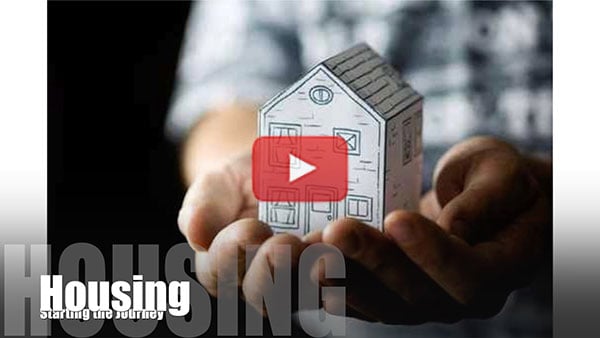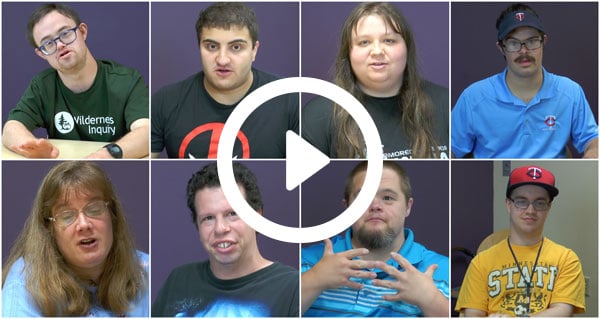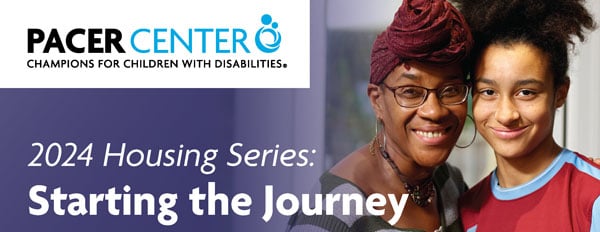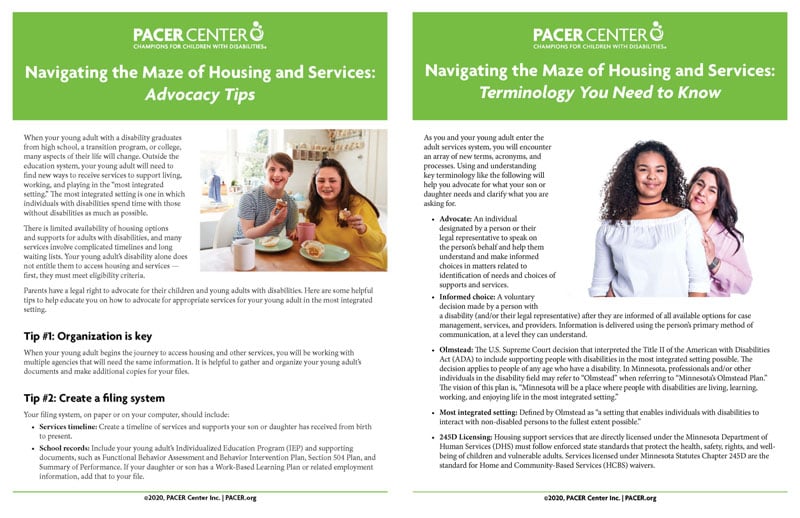
Housing: Starting the Journey
Will you be ready when it’s time for your young adult with a disability to move to a place of their own? The time to start planning is now! This Housing Project video gives you some groundwork from which to begin the journey.
This five part Housing Video Series called “Home Is…" features the voices of young adults with disabilities describing what “Home” means to them and what they have learned along the way. This series focuses on the multidimensional aspects of home - Home is not just a getting a “place” but getting “a life."
PACER’s 2021-2024 Housing: Starting the Journey are available on the Housing Videos/Trainings page.
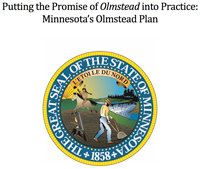
The Minnesota Olmstead Implementation Office works to make Minnesota a place where people with disabilities can live their best life. The Minnesota Olmstead Plan is a set of goals our State must meet so that people with disabilities can live, learn, work, and enjoy life alongside everyone else in the community. The Plan will give people with disabilities the opportunity to:
- Live close to their family and friends
- Live more independently
- Engage in productive employment
- Participate in community life
The Minnesota Olmstead Plan has goals that the State of Minnesota needs to reach. The plan also says what needs to happen to reach our goals and which state agencies are responsible. All of these State are responsible for making sure the plan is successful. If they aren't meeting their goals, the Olmstead Implementation Office works with the State Agency leaders to help them find ways to do better.
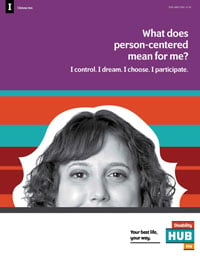
An introduction was created with the help of focus groups comprised of people with disabilities and the Disability Linkage Line®. It was created for people with disabilities and their families to help people with disabilities apply person-centered principles to their life. It also helps families and case managers learn and activate person-centered processes.
Minnesota is driving toward fulfilling the vision of people with disabilities and older Minnesotans living, learning, working, and enjoying life in the most integrated setting. This document is produced by the Minnesota Department of Human Services to communicate expectations regarding person-centered practices with its lead agency partners: counties, tribes and health plans. The Department will work with lead agencies to implement this protocol across the long-term supports and services and mental health services systems.
Sections
Many parents of adolescents look forward to the time when their sons or daughters move out of the family home and into homes of their own. This housing guide is written to assist families so they can provide a leading role in planning for housing options for their child with a disability. Many housing options and supports for home living involve meeting eligibility criteria, timelines, waiting lists, and limited availability to obtain financial assistance. One way to help your young adult is to begin planning early.
Remember, it will take time, energy, and creativity to come up with a plan that fits your daughter or son’s individual needs. Housing options generally fall into the following categories:
Family’s, friend’s, or relative’s home,
Individualized housing options: home, townhome, condominium or apartment rental or ownership,
Community Residential Settings: adult foster care, group homes,
Institutions,
Intermediate Care Facility for persons with developmental disabilities (ICF/DD),
Nursing homes,
Cooperative housing,
Co-housing
A wide variety of services and supports exist to enable a person with disabilities to live independently. The philosophy of supported living is that no matter where an individual lives, services and supports can be matched to their needs. They can vary in amount, frequency, and duration. In order to access these services, you must apply for case management through your county social services department. Case management is defined as “identifying the need for, seeking out, acquiring, authorizing, coordinating, and monitoring the delivery of services to, and protecting the rights of, persons with disabilities by an individual designated by the county board.” Case managers are sometimes called county social workers. Not everyone is eligible for case management and certain services do not require case management.
Once parents and their young adult with a disability have visualized their home of choice, the next step is to explore how much can be spent on housing. It is essential to look at possible income, including Medicaid Supplemental Security Income (SSI), Social Security Disability Insurance (SSDI), work income, and family contributions. Administered by states, in Minnesota Medicaid is called Medical Assistance (MA). Creating a list of expenses is essential. There are no easy answers when it comes to obtaining payment for housing. Eligibility criteria for your daughter or son’s specific disability is a determining factor for most funding.
Programs that are directly licensed under the Minnesota Department of Human Services (DHS) must follow enforced state standards that have been adopted to protect the health, safety, rights, and well-being of children and vulnerable adults. Programs serving people with developmental disabilities are required to be licensed under Minnesota Statutes, Chapter 245A and the new Chapter 245D. 245D is the umbrella standard for many of Home and Community-Based Services (HCBS) waivers.
When your young adult with a disability graduates from high school, a transition program, or college, many aspects of their life will change. Outside the education system, your young adult will need to find new ways to receive services to support living, working, and playing in the “most integrated setting.” The most integrated setting is one in which individuals with disabilities spend time with those without disabilities as much as possible.
Webinar's, Training Videos, and meet many individuals who will tell you about their journeys.


